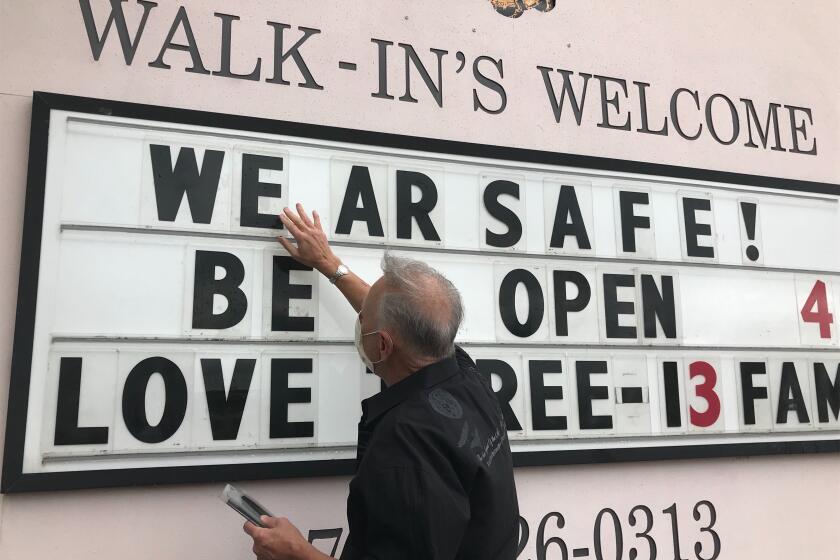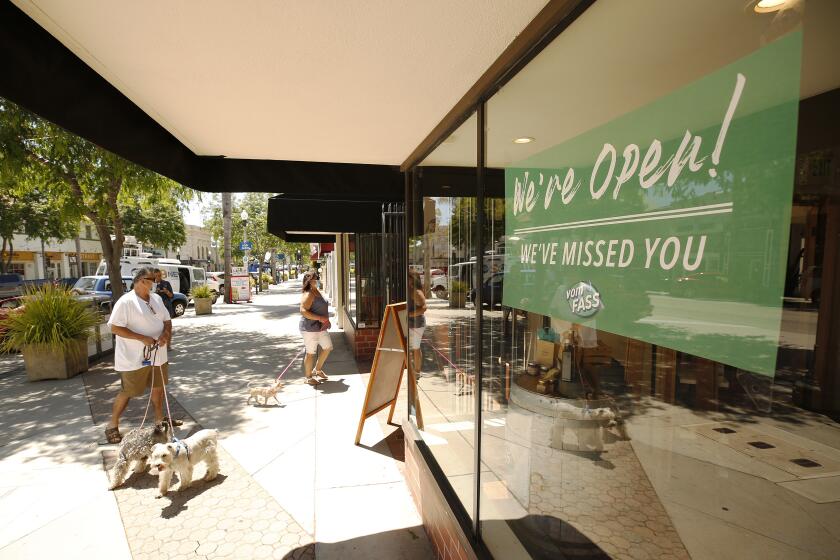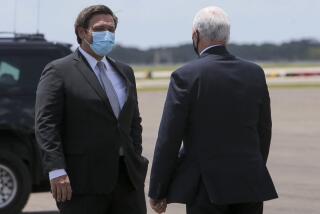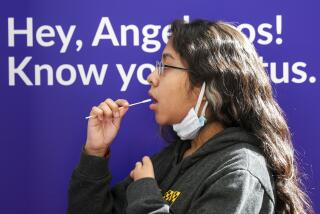The more we stay home, the less the coronavirus spreads. Here’s the evidence
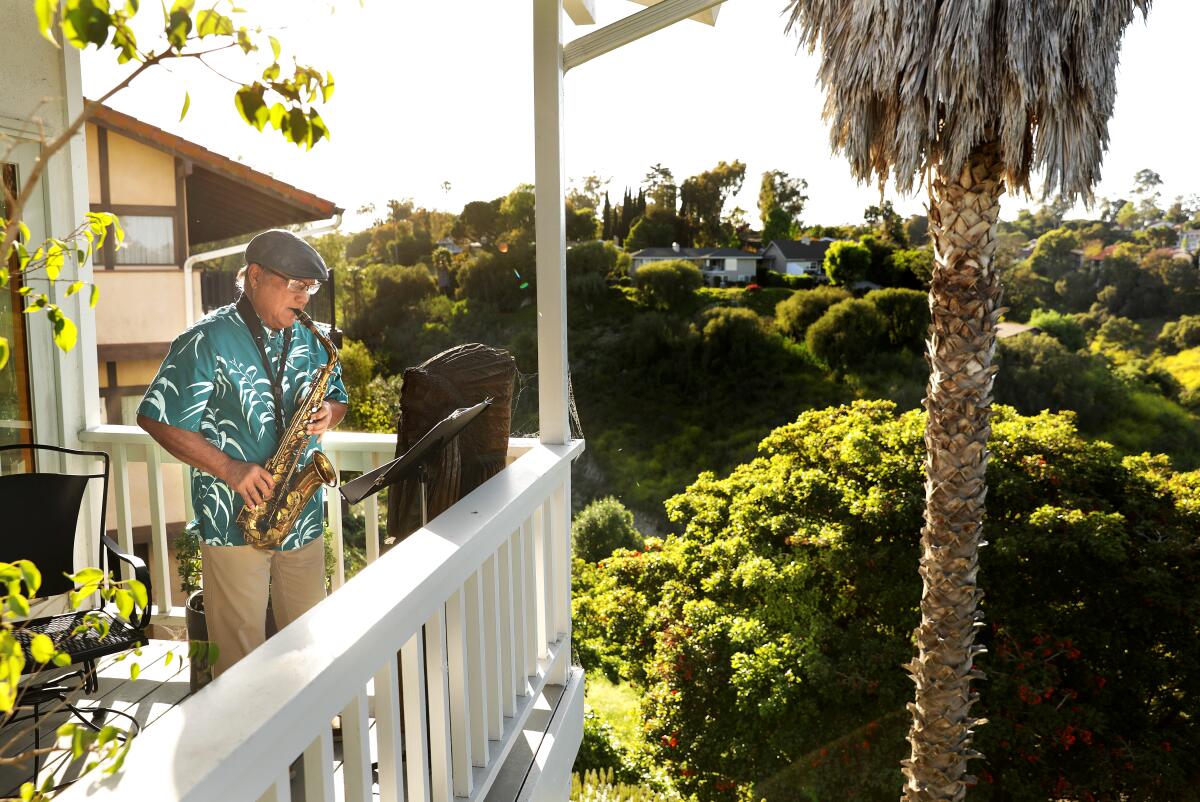
Remember when you decided against a trip to the dog park, a meet-up at a sports bar, or a visit to your sister’s house?
New research shows that such social distancing decisions mattered back in April, when the coronavirus was still expanding its reach across the United States. And with the pandemic continuing to gather steam in much of the country, they probably matter now as well.
The new study estimates just how readily the coronavirus jumped from person to person in 211 key counties that are home to roughly 55% of U.S. residents. It finds that the more assiduously we avoided nonessential outings, the less briskly the virus that causes COVID-19 spread.
For instance, when residents of a typical county cut their visits to nonessential businesses in half, a single infected person transmitted the virus to 46% fewer people than she would have in a county where business proceeded as usual, the study authors found. In some counties, that reduction could end the outbreak.
The researchers, led by Dr. David Rubin, a pediatrician and director of the PolicyLab at Children’s Hospital of Philadelphia, aimed to measure how much three variables — social distancing behavior, population density and ambient temperature — influenced coronavirus spread by putting more or fewer victims within contagion range of an infected person’s sneeze.
Their clearest finding: Social distancing matters most.
Published Thursday in the journal JAMA Network Open, the study calculated prevailing transmission levels in counties that are home to state capitals or claim at least 100,000 residents. For each county, the researchers used cellphone data to track changes in people’s average daily movements. Then they looked at how new infections rose or fell roughly a week later.
The reckoning is based on trends documented between Feb. 25 and April 23, when the coronavirus was spreading in all 211 counties but social distancing behaviors varied widely. It uses a measure of spread — the instantaneous reproductive number — that allows researchers to directly compare transmission rates in counties with well-established outbreaks to rates in counties where spread has just begun.
For the purposes of their study, the researchers assumed that a single coronavirus particle expelled in the sneeze of someone in Sonoma County is as inherently transmissible as a viral particle in Plymouth County, Mass.
A new tracker from Johns Hopkins University lets you compare the trajectory of coronavirus cases in each state with the reopening policies there.
Population density mattered. Given the same degree of social distancing by residents, the coronavirus spread more efficiently in counties with lots of apartment dwellers and shared spaces than it did in counties with more wide open spaces.
But social distancing decisions mattered more.
Assuming that a typical American made four nonessential trips on a typical pre-pandemic day, the researchers determined that in counties where residents scrubbed all of those trips, the virus spread less than when only three trips were skipped. Overall, the researchers saw a linear correlation between the number of nonessential outings by a county’s residents and the number of people a single person could infect.
And the impact of social distancing was magnified in densely populated counties, where the virus transmitted more efficiently from person to person to begin with.
Weather mattered too, but not as much as social distancing, and not in straightforward ways. As temperature and humidity levels rose from chilly to a merely cold heat index of 51 degrees Fahrenheit, transmission rates tended to decline. Between 51 and 68 degrees of heat and humidity, the virus’ ability to jump from person to person rose modestly. Then it declined again as the heat index rose above 68 degrees.
The findings suggest that, in parts of the country, autumn’s falling temperatures could give social distancing measures a final, fleeting moment of impact before colder temperatures set in for the winter. When the heat index hovered around 42 degrees and nonessential outings fell by 35%, at least half of the counties saw transmission rates fall too low to sustain an outbreak. With the same chill in the air, a 70% decline in outings slowed transmission to a standstill in virtually every county.
But when the heat index was just above freezing, social distancing measures seemed to have little power to slow transmission. Reducing nonessential outings by 70% halted outbreaks in fewer than half the counties. And with a more modest 35% decline in outings, brisk transmission continued in all but two counties.
Viruses are not as smart as humans, but they are much more patient. And the coronavirus’ track record suggests it won’t simply burn itself out.
The findings provide a timely reminder that, unlike the weather and the number of neighbors we have, there’s a factor Americans can control to slow the coronavirus’ spread, said Georgia State University public health expert Gerardo Chowell, who wasn’t involved in the research.
The results, he added, are in line with those of research in which Chowell and colleagues found countries that implemented social distancing policies with greater speed and vigor have gone on to experience lower transmission rates than countries that dawdled.
The new study’s county-level resolution can help make clear that decisions made by oneself and one’s neighbors — not an influx of outsiders — are the cause of local spread.
“These findings are still relevant,” Chowell said.
He noted that differing testing rates among the 211 counties might limit the study’s ability to predict local trends. But as testing becomes more widespread and consistent across the country, he said the researchers should repeat their analysis to see if changes in social distancing are associated with changes in positive tests.
That, he said, would strengthen the argument that Americans’ individual decisions can affect the pandemic’s trajectory. It would also refine our understanding of how much social distancing is needed to bring the coronavirus to a standstill.
